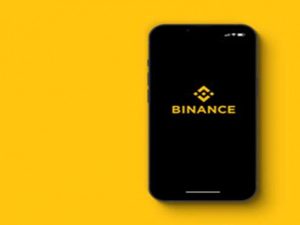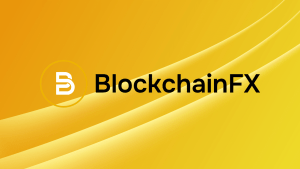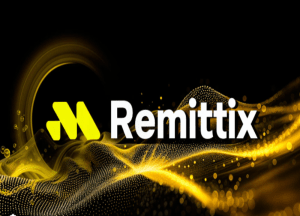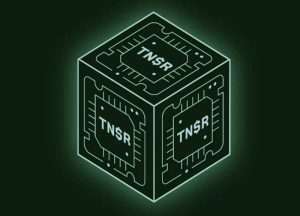How to Participate in the DeFi Ecosystem with Wrapped Bitcoin?
How do you participate in the DeFi ecosystem using Wrapped Bitcoin? Learn more about what it is, how it’s done, and more considerations.
The lack of a DeFi ecosystem native to the Bitcoin blockchain has triggered frantic attempts to build bridges between legacy blockchains. While research on interoperability is still ongoing, the Bitcoin community has come to rely on tokenized BTCs as a temporary gateway to the emerging DeFi market. In this guide, we will highlight the importance of this solution and the steps involved in wrapping Bitcoin. Before diving in properly, it’s worth taking a quick look at the concept of wrapped tokens.
What Is A Wrapped Token?
Wrapped tokens are collateralized digital assets that are pegged 1:1 to other cryptocurrencies. Much like stablecoins, they trail the value of their underlying digital assets. The only difference is that the collaterals are usually volatile digital assets, rather than fiat currencies. Therefore, the intention here is not to provide price stability; rather, the goal is to promote interoperability by minting native versions of established cryptocurrencies on multiple networks. In other words, this technique makes it possible to transfer liquidity between two or more technically incompatible blockchain networks.
It’s worth mentioning that DeFi has been the chief beneficiary of this paradigm shift. With the advent of wrapped tokens, it has become much easier to transfer liquidity to the DeFi ecosystem, which is why there has been a lot more inflow of DeFi liquidity from the Bitcoin market.
What Does Wrapped Bitcoin Mean?
From this definition of wrapped tokens, we can infer that wrapped versions of Bitcoin are digital representations of BTC on smart contract-supporting blockchains like Ethereum and Binance Chain. These digital assets are simply tokenized versions of Bitcoin that comply with the token standards of DeFi-supporting blockchains. A prime example of such tokens is Wrapped Bitcoin (WBTC), an ERC-20 token pegged to BTC and native to the Ethereum ecosystem.
Why Wrap Bitcoins?
Bitcoin has long maintained its dominance as the largest cryptocurrency by market cap. This is in part due to the perception that coin and its network deliver top-notch security and an unparalleled degree of decentralization. There is significant evidence that new investors are most likely to buy Bitcoin before exploring the altcoin market.
While this is a given, DeFi’s yield-generating opportunities rely upon smart contract-supporting altcoin blockchains. With Bitcoin remaining a siloed ecosystem, it’s almost impossible for BTC holders to directly engage with the DeFi market without giving up their Bitcoin positions in order to have a chance at accessing DeFi-compatible coins.
Understandably, Bitcoin holders find this process a bit irksome due to the extra fees associated with such exchanges and the risks involved in holding DeFi tokens in general, which, as less established coins, remain highly volatile.
From the other perspective, we have DeFi proponents and developers who understand the importance of capital inflows from the Bitcoin market. As part of their efforts to lower the barrier to entering the DeFi market, these entities have devised various ways of representing Bitcoin on Ethereum and other popular smart contract-supporting blockchains.
Predominantly, such systems maintain a 1:1 peg between Bitcoin and a tokenized version of the digital asset. In essence, they issue tokenized Bitcoin via smart contract-supporting blockchains.
For example, wrapped Bitcoin or WBTC, which is by far the most popular DeFi-enabled version of Bitcoin, always reflects the market price of BTC. WBTC users can therefore explore the DeFi terrain and still reap the benefits of Bitcoin’s solid price performance.
Three Techniques to Wrap Bitcoin
There are three different approaches to tokenizing Bitcoin, all of which require users to lock BTC or other digital assets in order to receive tokens pegged to the value of Bitcoin. Below is a short description of all three techniques.
Trustless Wrapping
When using a trustless wrapping model, you do not need to trust a centralized entity. You can directly send your Bitcoin to a smart contract programmed to mint tokenized Bitcoin equivalent to the amount of locked BTC. One example of a Bitcoin wrapping system utilizing a trustless technique is Keep Network.
Centralized Wrapping
As its name implies, centralized Bitcoin wrapping involves intermediate processes governed by third parties. Here, you will need to send an amount denominated in BTC to a centralized custodial platform. Subsequently, this platform will lock your Bitcoin in a smart contract and mint an equivalent amount of tokenized Bitcoin on Ethereum or any other specified blockchain. Finally, the merchant will transfer the tokenized Bitcoin to your wallet.
Synthetic Wrapping
Lastly, some Bitcoin wrapping solutions allow users to receive synthetic assets pegged to the value of Bitcoin. Unlike the other two models, synthetic wrapping does not necessarily use BTC collateral to mint a Bitcoin-pegged synthetic token. Depending on the protocol, you can lock a combination of digital assets in order to mint synthetic Bitcoin.
How to Mint Wrapped Bitcoin (WBTC)?
With a market cap worth over $6 billion, Wrapped Bitcoin (WBTC) is currently the most popular tokenized Bitcoin in the market. The digital asset uses a centralized Bitcoin wrapping technique that involves inputs from custodians and merchants. Notably, a decentralized autonomous organization called WBTC DAO decides who gets removed from or added to the list of approved custodians and merchants.
As a first step, you will have to interact with merchants tasked with initiating the wrapping procedure and performing KYC checks. Once the merchant confirms your identity, it sends your BTC to the custodian, who will, in turn, lock it and mint the specified amount of WBTC on the Ethereum blockchain. Subsequently, the merchant transfers the minted WBTC to your wallet.
In a scenario wherein the user requests to unwrap BTC, the custodian has to burn the minted BTC and unlock the collateral.
What Are the Drawbacks of Wrapping Bitcoin?
Using a wrapped version of Bitcoin trades away the decentralization and security of the Bitcoin network, since these tokens are native to other blockchain ecosystems, some of which are not as decentralized as Bitcoin. Tokenized Bitcoin therefore mirrors only the value of BTC and not the decentralization and security prowess of the Bitcoin blockchain.
Closing Thoughts
As highlighted in this guide, tokenizing bitcoin allows you to leverage your BTC holdings. Using this solution, you can create more value without completely exiting the value chain of the bitcoin ecosystem. However, before rushing to tokenize your bitcoin balance, be sure to understand the drawbacks and choose the tokenization technique that best suits your needs.









